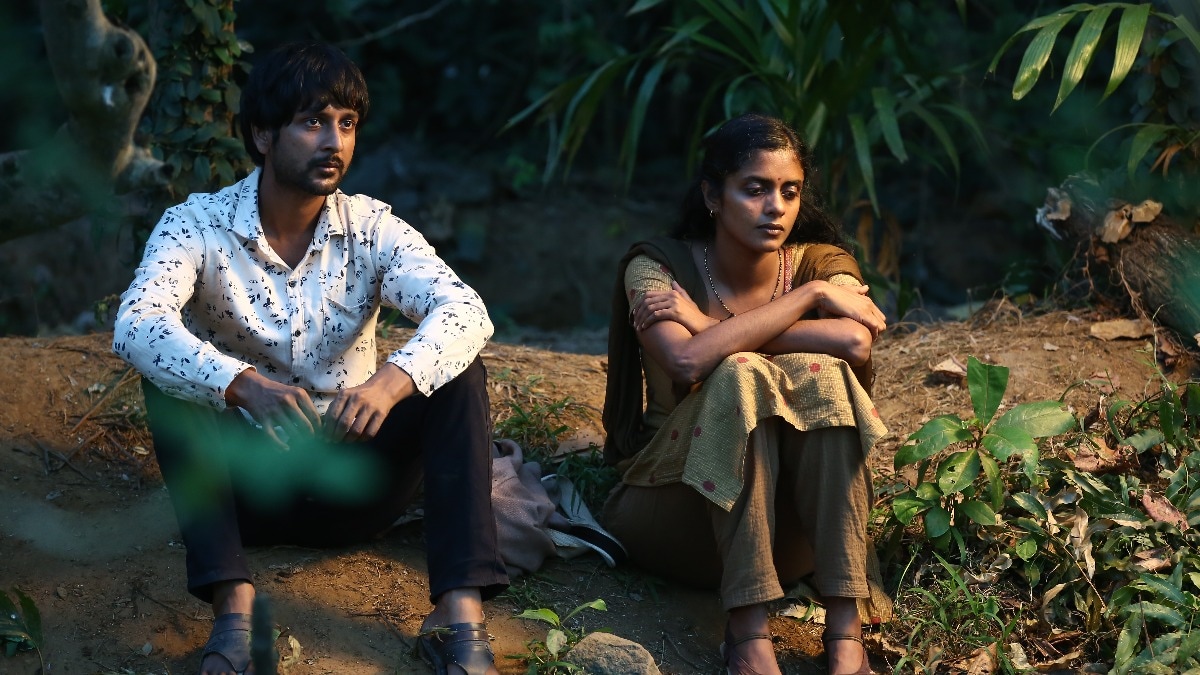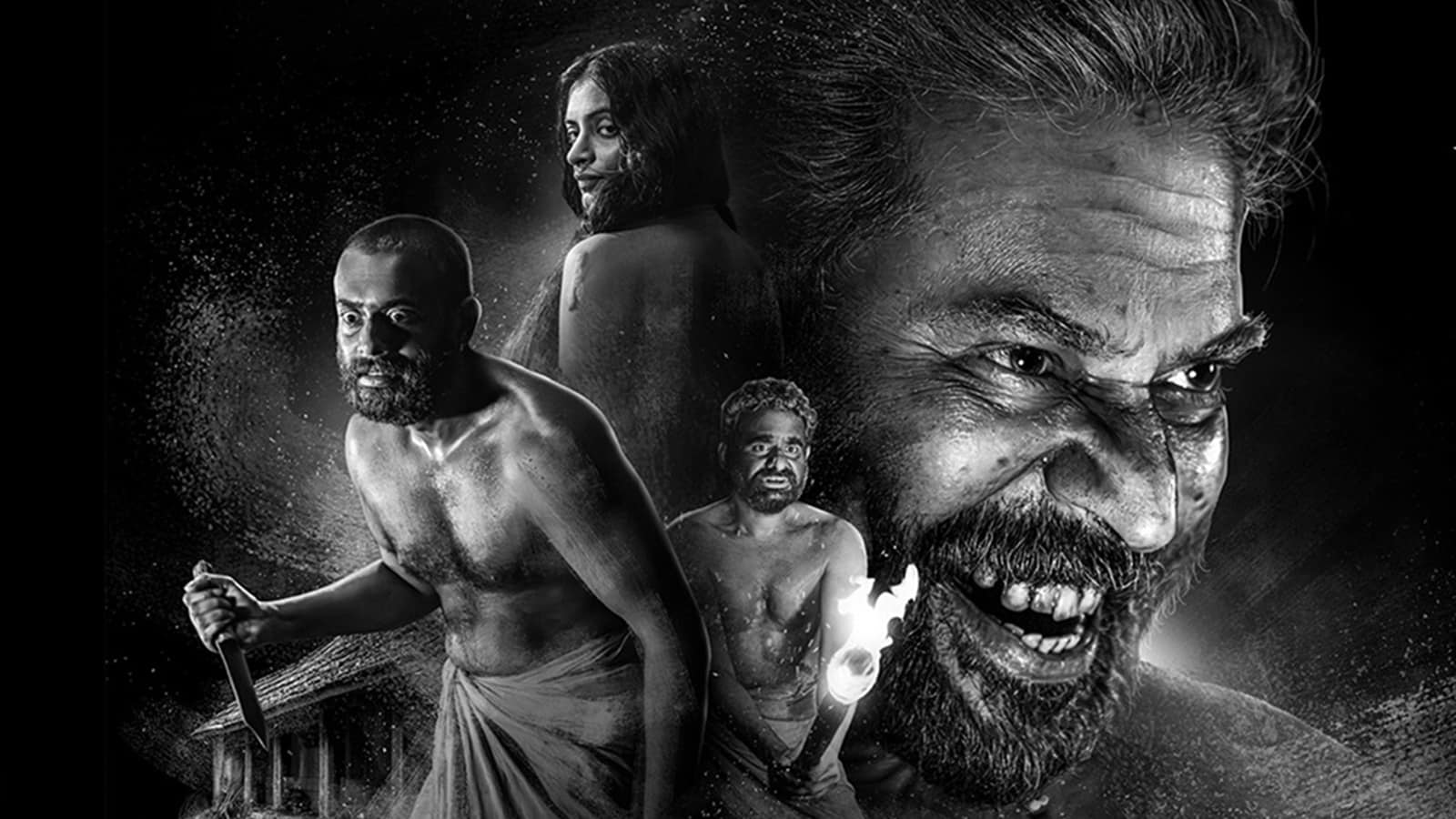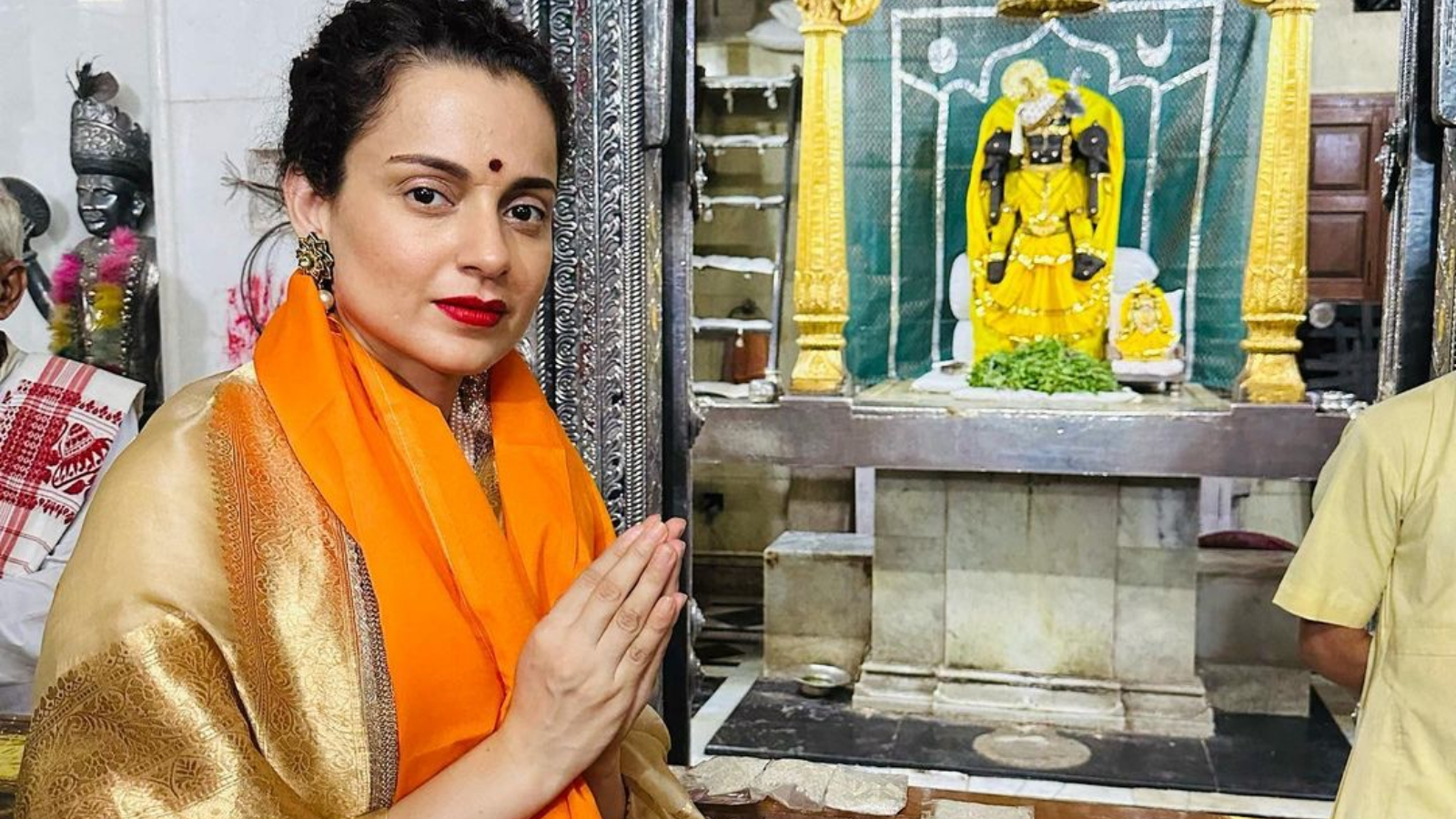Debut Malayalam film director Tara Ramanujan’s 2021 feature film Nishiddho won the second best feature film award at the 52nd Kerala State Film awards marking a singular turn in the tone and texture of recent Malayalam films to win popular and critical acclaim in the region’s thriving film industry.
Malayalam films, in general, are rightfully known for combining mainstream appeal with art-house values. Any number of recent Malayalam films, both from the commercial mainstream as well as the selective art stream, testify to a mature body of work that any industry would be proud to claim for its own. That being said, it must be noted that the Malayalam film industry’s face and voice, in a fundamental sense, remain overwhelmingly male. The “complete” actors are male, and the social and cultural milieu privileged in Malayalam films, for the most part, present rough and tumble homosocial spaces.
More recently, its register naturalistically mimics the argot of the marginalised male, the class and caste markers of their speech an emphatic vehicle of the new identity pockets in Malayalam films, which remain resolutely male.
it must be noted that the Malayalam film industry’s face and voice, in a fundamental sense, remain overwhelmingly male. The “complete” actors are male, and the social and cultural milieu privileged in Malayalam films, for the most part, present rough and tumble homosocial spaces.

Popular and established women directors like Anjali Menon, Geethu Mohandas, Revathi et al., and upcoming directors like Kunjila Mascillamani have secured a women-centred space for cinematic storytelling in the Malayalam film industry in recent years, but the field is wide open for more voices and more visions. Tara Ramanujan’s Nishiddho makes a bold and self-assured entrance into this space, new and singular in its visual texture and voice, and proclaiming a distinct gender-informed sensibility, revisioning both male and female characters in both its storytelling and filmmaking.
Nishiddho, produced by Kerala State Film Development Corporation under its women directors empowerment initiative, tells the story of the meeting and separation of Chaavi and Rudra. Chaavi is a domestic worker moonlighting as an unlicensed midwife, played with stoic restraint by the Malayali actor Kani Kusruthi, and Rudra, who is an idol-maker from Bengal working in Kochi’s booming construction industry, is played by the Bengali actor Tanmay Dhanania. Chaavi prays at the Periyachi Amman temple to the goddess of women, children, pregnancy and childbirth, while Rudra belongs to a family of idol makers in Kumartuli that makes the idols for the city’s famed Durga puja.
The juxtaposition of Periyachi Amman and Durga evolves to twine with the film’s themes in a subtle manner. Ramanujan sets the story of their unfulfilled and incomplete future in the bustling cityscape of metro Kochi, home, these days, to migrants from all over India, particularly from the northeastern states of Bihar, West Bengal, Assam, and Orissa. Indeed, almost all commercial establishments in Kochi these days provide their services in the local language, Malayalam, as well as in Hindi, a bridge language. It is not uncommon to hear snatches of conversations in Bangla, Assamese and Oriya on the crowded streets in Perumbavoor, Kochi or Ernakulam.
Popular and established women directors like Anjali Menon, Geethu Mohandas, Revathi et al., and upcoming directors like Kunjila Mascillamani have secured a women-centred space for cinematic storytelling in the Malayalam film industry in recent years, but the field is wide open for more voices and more visions. Tara Ramanujan’s Nishiddho makes a bold and self-assured entrance into this space, new and singular in its visual texture and voice, and proclaiming a distinct gender-informed sensibility, revisioning both male and female characters in both its storytelling and filmmaking.
The migrants work mostly in the construction industry, and it is the death of one such migrant worker, Rudra’s uncle, that sets the story in motion. Rudra’s uncle falls from the top of a building and dies on impact. His death is not compensated as he was not wearing the required safety gear, nor was he supposed to be even up there. A distraught Rudra tries to get his uncle’s body from the morgue for burial while negotiating with the construction company for some form of compensation for the accidental death.

Rudra meets Chaavi as he searches for someone to officiate his uncle’s funeral rites in Kerala as it becomes quickly apparent that he does not have the money to take the dead body back to Kolkata. Chaavi, the midwife, appears as the solution as she also helps with funeral rites on the side, a responsibility that she took over from her grandfather. Their meeting over a death eventually ends in the form of union and separation, just as every death contains within its emptiness the fullness of a life that has receded.
From its bold opening sequence of a dark screen over which we hear women’s voices coaching a woman in labour to push the baby out, Ramanujan invites us to view a world that privileges sound over spectacle. You have to listen to the words, the sounds. As the unseen pregnant woman finally pushes the baby out onto the dark screen after protracted labour, we hear the attendant women’s voices say, “Oh, no! Why isn’t it crying?” Like the unseen characters on the screen, we, the spectators too, wait expectantly for the sound of the newborn crying. Thus, the sounds of the baby’s first cries, a second later, open the film as the camera moves to an extreme closeup of Chaavi, the film’s protagonist. Chaavi, we learn later, almost did not cry at her own birth. It is a subtle exposition of one of the central motifs of the film: the survival of the girl child.
This choice of sound over spectacle is important for another reason in Nishiddho. The two main characters — Rudra and Chaavi — speak two completely different languages for the entirety of the film: Bangla and Tamil. They communicate using a pidgin of Bangla, Tamil, Malayalam, Hindi, and English. The naturalistic ease with which Ramanujan captures the pidgin without forcing any yardstick of clarity to their exchanges brings a steady realism to the life of migrants in their new homes. So much of the life of a migrant is spent in spaces of controlled incomprehension and lack of understanding.
We see and hear Kochi through the eyes of the migrants, as Chaavi and Rudra meander — we hesitate to call it a courtship — through the construction sites, the garbage dumps, the canals and waterways, the railway station, the pond, the sidewalks and tea stalls, the crowded rooms where the migrant labourers live, and Chaavi’s grandmother’s house in the Tamil migrant colony. Sure, the great big city absorbs everyone into an anonymous mass, but when we look closer, as Ramanujan does, these lives project their distinct cultures. On a surface level, these scenes with Rudra and Chaavi speaking to each other in their impromptu pidgin seem to meet the minimum demands of mutual comprehension, enough for them to confirm their attraction toward each other. He brings her jasmine flowers; she brings him fish curry.
This choice of sound over spectacle is important for another reason in Nishiddho. The two main characters — Rudra and Chaavi — speak two completely different languages for the entirety of the film: Bangla and Tamil. They communicate using a pidgin of Bangla, Tamil, Malayalam, Hindi, and English. The naturalistic ease with which Ramanujan captures the pidgin without forcing any yardstick of clarity to their exchanges brings a steady realism to the life of migrants in their new homes. So much of the life of a migrant is spent in spaces of controlled incomprehension and lack of understanding.
However, Rudra’s lack of trust in Chaavi — just for a nanosecond — when she is rumoured to have helped commit a crime, exposes the fragility of the bond that exists between them. The fragility is not merely an index of their linguistic distance but, more importantly, is the lack of worth ascribed to a woman’s words within a social system that does not honour women.
The final conversation between Rudra and Chaavi by the side of her pond in the dim light of the night illustrates this distance between them through a series of revelations, alternately, to each other and, more crucially, to us, the spectators. Beautifully shot by cinematographer Manesh Madhavan, this extended sequence shows, almost in real-time, through a combination of different shot types and shot durations — a mix and match of long shots, medium shots, two shots, closeups, shot-reverse-shot, speaking to the camera — the swiftly changing status of their relationship and the mental turmoil that accompanies it, from a friendly greeting to a final separation.
Rudra confesses to her about the circumstances of his uncle’s death in Bangla; she understands nothing except the word “paschathap,” remorse, regret, repenting. She latches on to the one word she understands — “paschathap”, which also exists in Malayalam — and tells him that she has no “paschathap”. While Rudra was speaking of his own regret at having played a part in his uncle’s untimely death, she misunderstands his usage of the word, interpreting it as Rudra asking her if she is regretful of having committed the crime she is accused of doing. She chastises him in Malayalam, questioning him as to why he draws eyes on goddess Durga when he cannot see the lives of mortal women.
When Chaavi finally digs up the clay from her pond and hurls it into the water in anger and disgust, Rudra scrambles up and walks away. Though he has not comprehended her words per se, he has understood that he has lost her. This is one of the best scenes in the film.
Ramanujan is a writer, and Nishiddho is a film for writers. The dialogue is an index of the thoughts of the characters and is fresh, quiet, and natural. The film is noteworthy for the sheer dexterity with which several languages are handled effortlessly to demonstrate both meaning and their absence.
Equally noteworthy are the performances by Kani Kusruthi and Tanmay Dhanania. Kani Kusruthi and Tanmay Dhanania play characters that we don’t normally see in Malayalam films. Kani plays a weary and stoic woman not performing for men or the society. She enunciates her lines with a clarity that sounds like a warning shot. Tanmay Dhanania is a revelation as a young migrant worker — quiet, modest, curious, tentative, affectionate, uncorrupted, and without any of the loud, loose-lipped, yelling bravado we have come to expect from male actors and characters on the Malayalam screen, often presented as a form of native naturalism. The scenes with these two actors are a pleasure to watch. They confidently redefine male and female characters in Indian cinema.
Ultimately, the alienation of the migrant worker portrayed in Nishiddho should serve as a looking glass to Malayalis. Kerala’s economy depends substantially on the remittances made by Malayalis working abroad, particularly in the Middle East and Gulf states. Again, Ramanujan suggests this connection in the subtle and nuanced role played by Uma, the mistress of the household where Chaavi works as a domestic worker. Uma’s husband works in the Gulf, while her aged father treats the “Bengali” migrant worker with contempt. Nishiddho ultimately reminds us that disadvantaged Malayalis have much more in common with the “Bengali” labourers who climb the girders of the metro Kochi skyline.
Also read: WCC, Hema Commission And The Fight To Address Systemic Abuse In The Malayalam Film Industry
The juxtaposition of two goddesses — Periyachi Amman of the Tamilians and goddess Durga of the Bengalis — comes to a decisive resolution in the final scene. The narrative cuts from a vivid montage of Durga Puja in Kolkata with the idols of the goddess being drowned in the river to a Periyachi Amman temple in Tamilnad. In a matching cut, we see Chaavi emerging from the waters as the Durga idols drown in them. Chaavi climbs up the steep steps to the top of the hot, bald hilltop by the temple, where her grandmother waits for her with an infant girl.
As with many other elements in the film, Ramanujan does not specify who the baby is. In the lullaby that ends the film, we learn that the baby girl’s name is Jalangi, the name of the river in Rudra’s ancestral village in West Bengal. A drowning, a resurfacing, a union and a separation, and two distant landscapes, Bengal and Kerala, become manifest in the little girl, Jalangi.
Ramanujan’s narrative style is necessarily aporetic: there are no easy answers to any of the questions raised by Nishiddho. It is not a story about the romance between a man and a woman who speak different languages, but the film floats on the power of love that can save lives. Above all, the film offers the rare calm of having done the right thing, even though sometimes the right thing is to go your own way. In its emphatic decision to walk its own path, Nishiddho has created an original niche in regional cinema.
Also read: Dissecting Anti-Abortion Mentality In Malayalam Cinema Through ‘Kana Kanmani’ & ‘Aval’
Dr Gayatri Devi is a Professor of English at Savannah College of Art and Design, Savannah, Georgia. She can be reached at gdevi@comcast.net.
Featured image source: iffk, IBC World News




